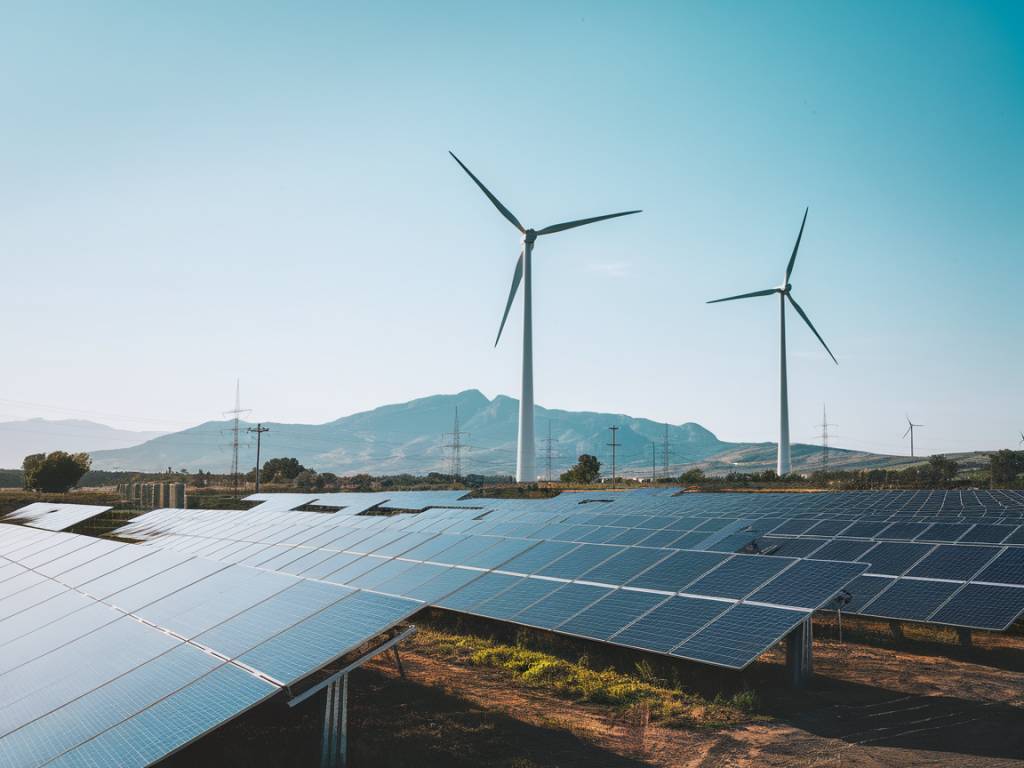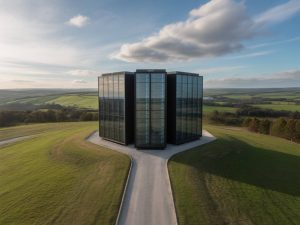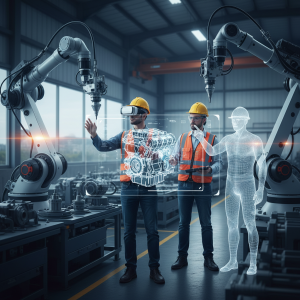AI: The Game Changer in Renewable Energy
Renewable energy is no longer a niche topic; it’s at the forefront of shaping a sustainable future. But as promising as wind, solar, and hydropower are, they come with their unique set of challenges. Enter Artificial Intelligence (AI) – the silent powerhouse optimizing processes and making renewable energy production smarter, more efficient, and ultimately more sustainable.
Curious about how AI is powering this green revolution? Let’s dive into its role in transforming the renewable energy landscape.
Optimizing Energy Forecasting
One of the greatest obstacles in renewable energy production has always been its dependency on variable environmental factors. Solar panels rely on sunlight, wind turbines on gusts of wind, and hydropower plants on stable water levels. This variability has made energy forecasting both crucial and notoriously complex.
This is where AI comes in. Using machine learning algorithms, AI analyzes massive datasets from weather reports, historical energy production, and real-time conditions to make highly accurate predictions. For example:
- Wind Energy: AI can forecast wind speed down to the hour, helping operators adjust turbine settings for maximum efficiency.
- Solar Energy: By predicting cloud cover and sunlight intensity, AI ensures solar farms operate at their peak potential.
The result? Reduced energy waste, better grid stability, and a more reliable energy supply for everyone.
Improving Asset Management
Let’s face it: renewable energy infrastructure doesn’t come cheap. Whether it’s solar panels, wind turbines, or high-pressure dams, the maintenance and upkeep of these systems are vital for uninterrupted energy production.
Here again, AI flexes its muscles. It powers predictive maintenance strategies by analyzing performance data and identifying early signs of wear and tear or potential failures. Imagine a scenario like this: A few sensors on a wind turbine detect unusual vibrations. An AI algorithm flags the issue, sends a maintenance alert, and even suggests the exact part that needs replacement. All of this happens before the problem leads to downtime or costly repairs.
For industries and governments investing billions in renewable energy projects, AI-driven asset management means a higher return on investment and fewer headaches.
Enabling Smarter Energy Storage
One of the critical hurdles for renewable energy adoption lies in its intermittent availability. The sun doesn’t always shine, and the wind doesn’t always blow when you need it most. This is where energy storage solutions like batteries come into play, but optimizing their usage is no small feat.
Enter AI. Leveraging advanced algorithms, AI ensures energy is strategically stored and dispatched at the right moments. For instance:
- During periods of low demand, excess energy is stored in batteries.
- During peak demand, AI balances distribution, drawing from storage to stabilize the grid.
The result? No energy goes to waste, grid blackouts are averted, and consumers enjoy a reliable power supply.
Smart Grid Integration
Traditionally, power grids have been relatively static, designed for a one-way flow of electricity from power plants to homes and businesses. But with the rise of decentralized renewable energy sources like rooftop solar panels, the dynamics have drastically changed.
AI helps transition these traditional grids into “smart grids” capable of handling the complexities of modern energy systems. Here’s how:
- Real-Time Monitoring: AI monitors energy flows in real-time, adjusting the distribution to prevent bottlenecks.
- Dynamic Load Balancing: Based on demand, AI ensures electricity is distributed where it’s needed most, reducing waste and improving efficiency.
- Integrating Renewables: AI perfectly integrates energy from decentralized sources into the grid, ensuring a smooth, stable power supply.
With AI, the grid becomes not only smarter but also a key enabler of renewable energy proliferation.
Empowering Consumers with AI
AI optimization isn’t just for energy companies and grid operators—it’s also empowering consumers like never before. Smart home systems, powered by AI, are enabling homeowners to make more sustainable energy choices. For instance:
- Consumption Insights: AI analyzes household energy usage and provides actionable recommendations to reduce consumption and costs.
- Dynamic Pricing: When paired with time-of-use pricing schemes, AI suggests when to run energy-intensive appliances, such as during off-peak hours when renewable energy availability is high.
- Demand Response: Automated systems adjust energy usage based on signals from the grid, reducing strain during peak times and lowering electricity bills.
These smart solutions not only enhance energy efficiency but also make individuals active participants in the renewable energy movement.
Real-World Examples of AI in Action
AI’s integration into renewable energy isn’t just theoretical—it’s happening right now. Here are a few real-world examples:
- Google’s Wind Energy Optimization: Google has deployed DeepMind’s AI technology to predict wind farm output 36 hours in advance. This allows more predictable and grid-friendly energy scheduling.
- Tesla’s Virtual Power Plant in Australia: Tesla’s AI-powered system connects thousands of home batteries to create a virtual power plant, stabilizing grid supplies during high demand.
- Iberdrola’s Smart Maintenance: The Spanish energy giant uses AI to monitor and maintain its vast network of wind farms, detecting potential failures before they occur.
These trailblazing examples demonstrate how AI is already redefining what’s possible in renewable energy production.
Looking Towards a Greener, Smarter Future
As renewable energy becomes an integral part of the global energy mix, efficiency, reliability, and sustainability will remain vital goals. AI is empowering the energy sector to overcome challenges that seemed insurmountable just a decade ago. From smarter energy forecasting to real-time grid management and beyond, AI is not only optimizing renewable energy but also driving us closer to a sustainable future.
So, the next time you see a wind turbine spinning in the breeze or solar panels gleaming under the sun, consider this: somewhere behind the scenes, AI might be hard at work, ensuring every ounce of energy is maximized for a brighter, greener tomorrow.






More Stories
Powering Data Centers Sustainably: The Role of Renewable Energy in the Digital Age
Integrating Biophilic Design with Green Technology: A New Paradigm for Sustainable Living
How virtual reality is transforming modern manufacturing processes